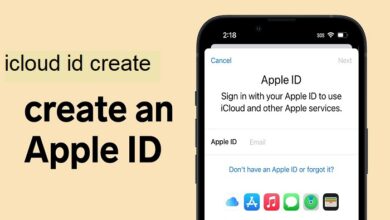
The iCloud GU login system provides users with seamless access to Apple’s suite of cloud-based services. For those new to Apple or unfamiliar with iCloud, understanding this login system is essential to maximizing the productivity and convenience offered by Apple devices. Through the iCloud GU login portal, users can sync photos, documents, messages, and more across their devices effortlessly.
In essence, the iCloud GU login acts as the gateway to Apple’s cloud ecosystem. It allows users to access and manage their iCloud account, sync data, and leverage Apple’s storage options securely. By mastering the iCloud GU login, you can optimize your Apple experience, from accessing your data on any Apple device to securing sensitive information.
Setting Up iCloud GU Login on Different Devices
Setting up your iCloud GU login on various devices is straightforward but varies slightly depending on whether you’re using an iPhone, iPad, Mac, or even a Windows PC. To get started, you’ll need an Apple ID. Once you have one, you can use it to log in to iCloud GU and enable all iCloud services on each device.
For iPhones and iPads, you can go to Settings, tap your name, and sign in with your Apple ID to access the iCloud GU login. On a Mac, simply open System Preferences, select Apple ID, and sign in. Windows users can also install the iCloud app from Apple’s website, making it easier to sync and store data across devices.
Benefits of Using iCloud GU Login
The iCloud GU login offers users numerous benefits, from data syncing and backup to file sharing and secure storage. By using iCloud, users can automatically sync contacts, calendars, reminders, and notes across all Apple devices, ensuring they’re always up-to-date. Additionally, iCloud GU login provides access to Find My iPhone, which is invaluable for locating lost or stolen devices.
Another significant benefit of iCloud GU login is the seamless photo and file sharing capabilities. With iCloud Photos, users can access their entire photo library on any Apple device, making it easy to share memories or save space by storing media on iCloud. Moreover, with features like iCloud Drive, users can securely store files and documents, ensuring they’re accessible from anywhere.
How to Troubleshoot iCloud GU Login Issues
Experiencing issues with iCloud GU login is not uncommon, but most problems have simple solutions. One of the first steps is to check if Apple’s iCloud servers are down by visiting Apple’s System Status page. If everything is operational, the issue might be related to your internet connection or device settings.
Another common problem is forgetting the password. If you’ve forgotten your Apple ID password, you can reset it through the “Forgot Apple ID or password” link on the iCloud login page. Additionally, make sure your devices are updated with the latest software, as outdated software can sometimes interfere with iCloud GU login functionality.
Advanced Security Tips for iCloud GU Login
Ensuring your iCloud GU login is secure is essential to protect personal data. One of the best ways to enhance security is to enable two-factor authentication (2FA). This feature provides an additional layer of protection by requiring a verification code alongside your password when signing in on a new device.
It’s also recommended to use a strong, unique password for your iCloud GU login. Avoid using the same password across multiple accounts, as this can increase vulnerability. Furthermore, regularly review your Apple account settings and update your security information to maintain account integrity.
Managing Storage and Backups with iCloud GU Login
With iCloud GU login, users can manage storage efficiently, making the most of the available space. By default, iCloud provides 5GB of free storage, which may not be sufficient for many users. You can check your storage usage via the iCloud settings on your device and choose to upgrade your storage plan if necessary.
Managing backups is another key feature of iCloud GU login. You can enable automatic backups for your devices, which is crucial for preserving photos, messages, and app data. Regular backups ensure that in case of a device failure or accidental data loss, you can easily restore everything from iCloud.
iCloud GU Login for Family Sharing
Family Sharing is an impressive feature available through iCloud GU login that allows families to share purchases, subscriptions, and iCloud storage. By setting up Family Sharing, you can create an iCloud account for each family member, allowing them to share access to Apple Music, Apple TV+, and other subscriptions.
Family Sharing with iCloud GU login also enables parental controls, making it easier for parents to manage their children’s screen time, purchases, and app usage. Additionally, family members can share storage space, reducing the need for individual storage plans.
Utilizing iCloud GU Login for Document Collaboration
The iCloud GU login allows users to collaborate on documents in real-time. By using iCloud Drive, users can invite others to view, edit, or comment on files. This feature is particularly beneficial for students and professionals who need to work together on projects. You can share folders and grant permission to edit, view, or comment, making it ideal for group projects or team collaborations.
To use this feature, simply log into iCloud GU, open iCloud Drive, and select the file you wish to share. You can send custom invitations to others via email or direct link, and they can access the document through their Icloud account
Keeping Your Photos Safe with iCloud GU Login
The iCloud GU login provides a safe, convenient way to store and access photos across all your devices. With iCloud Photos enabled, every photo and video you take is automatically uploaded to iCloud and synced with all your devices. This service not only frees up space on your device but also ensures that your photos are safely backed up.
To activate this feature, simply log in to iCloud GU and enable iCloud Photos under your device settings. From there, your photos and videos will be organized by moments, collections, and years, making it easy to find specific memories.
How to Log Out of iCloud GU Safely
Knowing how to safely log out of your iCloud GU login is essential, particularly when using shared or public devices. On an iPhone or iPad, you can log out by going to Settings, tapping your name, and selecting Sign Out. For Mac users, go to System Preferences, select Apple ID, and sign out from there.
If you’re accessing iCloud GU from a browser, make sure to log out when you’re finished, especially on public computers. Additionally, use the iCloud GU login “Find My iPhone” feature to remotely log out of devices if you ever forget to sign out.
Conclusion
Mastering the iCloud GU login allows users to harness the full power of Apple’s cloud-based ecosystem, from syncing and sharing to secure backups. Whether you’re a casual user or a power user, understanding the iCloud GU login will enhance your Apple experience by providing seamless access to your data across devices, with advanced security options and storage management features. With iCloud GU login, Apple users can enjoy a secure, efficient, and integrated cloud experience.
FAQs
Q1: What is iCloud GU login, and how does it differ from regular iCloud login?
A1: The iCloud GU login offers a graphical user interface (GU) designed for ease of use, enabling seamless access to all iCloud services.
Q2: How can I recover my iCloud GU login password if I forget it?
A2: You can recover your iCloud GU login password by clicking on “Forgot Apple ID or password” and following the prompts.
Q3: Is there a limit to how many devices I can access with my iCloud GU login?
A3: No, you can use your iCloud GU login on multiple devices as long as they’re signed in with your Apple ID.
Q4: Does iCloud GU login provide options for secure data backup?
A4: Yes, iCloud GU login offers automatic backups for data, photos, messages, and app data on supported devices.
Q5: Can I use iCloud GU login on a non-Apple device?
A5: Yes, Windows users can access iCloud GU through the iCloud app or a web browser, allowing cross-platform functionality.





